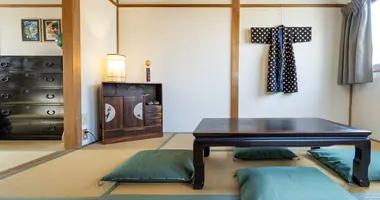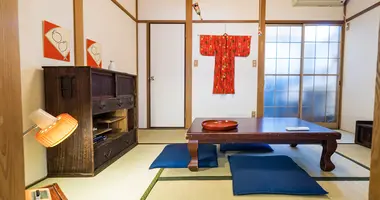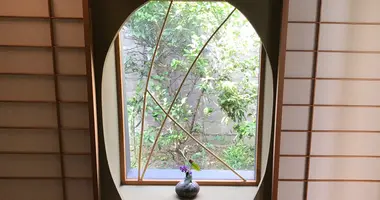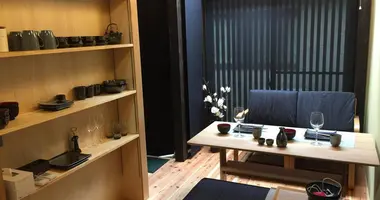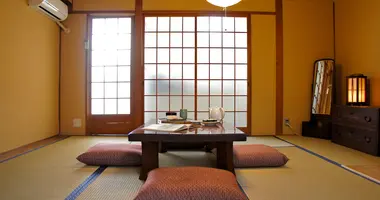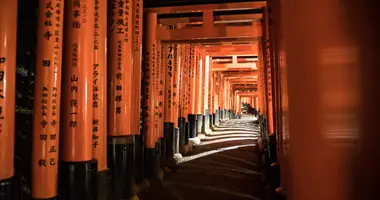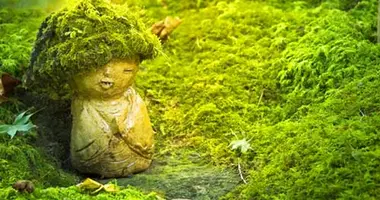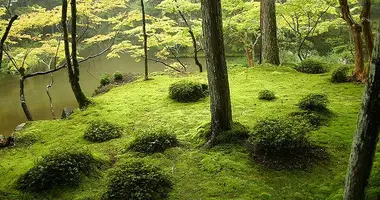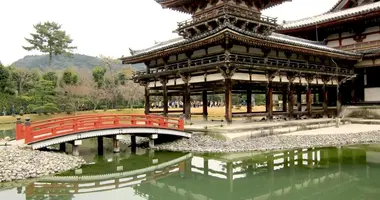Bloody Temple Ceilings of Kyoto: A Macabre Legacy of Samurai Sacrifice
- Published on : 22/05/2024
- by : Japan Experience
- Youtube
In the heart of Kyoto, a city steeped in history and tradition, lies a chilling reminder of Japan's samurai past. Five serene temples harbor a dark secret within their walls - ceilings stained with centuries-old blood, testament to one of the most brutal samurai conflicts in history. These blood-stained ceilings, known as "chitenjo", offer a unique and macabre glimpse into the honor, sacrifice, and violence that defined the samurai era. As you explore these temples, you'll be walking beneath the final moments of warriors who chose death over dishonor, their legacy literally etched into the very fabric of these sacred spaces.
The historical context: Fushimi Castle and the battle of 1600
The story of Kyoto's bloody ceilings begins with the siege of Fushimi Castle in 1600, a pivotal moment in Japanese history. This battle was a prelude to the larger Battle of Sekigahara, which would ultimately determine the fate of Japan for centuries to come.
Fushimi Castle, originally built as a retirement palace for the powerful warlord Toyotomi Hideyoshi, became a strategic stronghold in the power struggle that followed his death. The castle was held by Torii Mototada, a loyal vassal of Ieyasu Tokugawa, who was vying for control of Japan against rival warlords.
In August 1600, a massive army of 40,000 men led by Ishida Mitsunari laid siege to Fushimi Castle. Mototada, commanding a garrison of just 2,000 men, knew that his situation was hopeless. However, he was determined to buy time for his lord Ieyasu to gather his forces and march to victory at Sekigahara.
The legend of the bloody ceilings: Samurai honor and ritualistic suicide
For eleven days, Mototada and his men held out against overwhelming odds. As the castle's defenses crumbled and defeat became inevitable, Mototada made a decision that would echo through the centuries. Rather than surrender, he chose to follow the samurai code of honor and commit seppuku - ritual suicide by disembowelment.
According to historical accounts, Mototada gathered his remaining men and spoke these words: "As we are all to die, to die first, in front of the enemy, is what a warrior should do. Let us prepare ourselves for death." With that, Mototada and his loyal retainers performed the gruesome ritual, their blood soaking into the wooden floorboards of Fushimi Castle.
This act of mass suicide was not merely a gesture of despair, but a profound expression of samurai values. By choosing death over capture, Mototada and his men believed they were preserving their honor and demonstrating ultimate loyalty to their lord. Their sacrifice also served a practical purpose, as the time bought by their resistance proved crucial to Ieyasu's eventual victory at Sekigahara.
Five temples with blood-stained ceilings: A unique tour in Kyoto
Today, visitors to Kyoto can witness the legacy of this dramatic event in five temples that house the infamous blood-stained ceilings. These temples are:
- Yogen-in Temple: Known for having the most vivid and extensive bloodstains.
- Genko-an Temple: Features a ceiling with visible handprints and footprints.
- Shoden-ji Temple: Contains ceiling boards with distinct blood patterns.
- Hosen-in Temple: Offers a tranquil garden view alongside its macabre ceiling.
- Myoshin-ji Temple: Houses bloodstained floorboards in one of its sub-temples.
Each of these temples provides a unique perspective on this historical event, combining serene Buddhist architecture with a stark reminder of samurai valor. As you sit in these peaceful spaces, perhaps sipping matcha tea, you'll be directly beneath the final moments of warriors who died centuries ago. It's a profoundly moving experience that bridges the gap between past and present in a visceral way.

The preservation and repurposing of Fushimi Castle's floorboards
After the Battle of Sekigahara, Fushimi Castle fell into disuse. In 1623, the castle was dismantled, and its materials were distributed to various temples and castles throughout Japan. The blood-soaked floorboards from the fateful siege were carefully preserved and incorporated into the ceilings of select temples.
This act of preservation was not merely practical recycling, but a deliberate effort to honor the memory of the fallen samurai. By placing these bloodstained boards in temples, the spirits of the deceased warriors could be prayed for and put to rest in tranquil, sacred spaces.
The process of incorporating these boards into temple ceilings was done with great care and reverence. In some cases, the boards were left as they were, with the blood stains clearly visible. In others, they were partially cleaned or treated, leaving ghostly imprints of the original stains.
Decoding the blood stains: Visible marks and their interpretations
The blood stains on these ceilings are not just random splatters. Close examination reveals distinct patterns and shapes that offer insight into the final moments of the samurai who died at Fushimi Castle.
At Yogen-in Temple, visitors can see what appears to be the outline of a full human body, complete with facial features. This eerie imprint is believed to be the result of a samurai falling onto the floor after committing seppuku, his blood seeping into the wood and preserving his final pose.
Genko-an Temple's ceiling bears clear handprints and footprints, suggesting the desperate struggles of wounded warriors. Some stains show evidence of being smeared or dragged, hinting at the chaos and violence of the castle's final moments.
Interpreting these marks requires a mix of historical knowledge and imagination. As you gaze up at these ceilings, you might find yourself piecing together the stories of individual samurai, their final acts of bravery and desperation written in blood on the wood above you.

Controversy and skepticism: Alternative explanations for the stains
While the story of the blood-stained ceilings is compelling, it's not without controversy. Some historians and skeptics have proposed alternative explanations for the marks on these temple ceilings.
One theory suggests that the stains might be the result of natural wood discoloration or water damage over time. The irregular patterns and shapes could potentially be explained by the way wood ages and reacts to moisture.
Others argue that while the boards may indeed come from Fushimi Castle, the blood stains might not be as extensive as claimed. Some suggest that only a few boards bear genuine blood stains, with the rest being either exaggerated or misidentified over time.
There's also debate about whether all the stains can be attributed to the 1600 siege. Some propose that the boards might have accumulated stains from various events over the years before being incorporated into the temple ceilings.
Despite these controversies, the power of the story and the visual impact of the stains continue to captivate visitors. Whether entirely factual or partially embellished, the blood-stained ceilings remain a potent symbol of samurai sacrifice and a unique historical artifact.
Cultural significance: Honoring sacrifice and finding peace in modern Japan
The blood-stained ceilings of Kyoto's temples serve as more than just a historical curiosity. They play a significant role in modern Japan's relationship with its samurai past and offer insights into Japanese cultural values.
For many Japanese people, these ceilings represent the embodiment of bushido, the samurai code of honor. The willingness of Torii Mototada and his men to sacrifice their lives for their lord exemplifies virtues like loyalty, duty, and honor that continue to be respected in Japanese society.
At the same time, the placement of these bloody reminders in peaceful Buddhist temples reflects a complex attitude towards violence and its aftermath. By incorporating the blood-stained boards into places of worship, there's a sense of seeking redemption and peace for the souls of the fallen warriors.
Visitors to these temples often describe a profound emotional experience, feeling a connection to history and a deeper understanding of the samurai ethos. The juxtaposition of the violent past with the serene present creates a space for reflection on themes of duty, sacrifice, and the transience of life.
As Japan continues to grapple with its historical legacy, sites like the blood-stained ceilings offer a tangible link to the past and a way to honor those who came before. They serve as a reminder of the complexities of history and the enduring impact of individual choices made centuries ago.
Whether you're a history enthusiast, a student of Japanese culture, or simply a curious traveler, a visit to Kyoto's blood-stained ceiling temples promises a unique and thought-provoking experience. As you sit beneath these ancient boards, you'll find yourself transported back to a time of samurai, sieges, and sacrifice, all while contemplating the echoes of that distant era in the Japan of today.
For more information about Kyoto's temples and other historical sites, or to plan your own journey through Japan's rich past, explore our comprehensive guides and travel resources. And if you're intrigued by the samurai era, don't miss our articles on famous warriors like Toyotomi Hideyoshi and the turbulent Azuchi-Momoyama period.
To delve deeper into the fascinating world of Japanese history and culture, check out these Books on Kyoto Japan. And for more insightful articles about Japan's hidden treasures and historical wonders, explore Alan Wiren's contributions and Other Japan articles by Alan Wiren.
